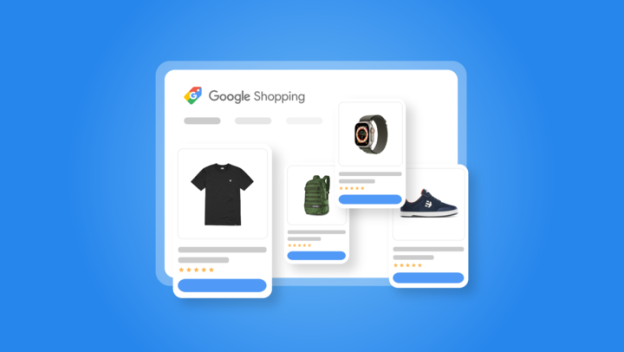Table of Contents
In today’s rapidly evolving digital landscape, artificial intelligence (AI) has moved beyond traditional data analytics and automation into more creative realms, transforming the way brands communicate and present themselves. AI’s role in creative design and brand identity is becoming more prominent, influencing everything from logo creation to personalised branding experiences. This shift is leading to a new era in which AI helps brands become more adaptive, dynamic, and aligned with consumer expectations.
In this article, we’ll explore how future of Branding with AI, revolutionizing the way businesses create and maintain their identities.
Understanding the Role of AI in Creative Design
AI has long been associated with automating repetitive tasks, but it is now making strides in creative design, thanks to advancements in machine learning and neural networks. Through pattern recognition, AI tools can analyse vast amounts of data and generate designs, ideas, and solutions that resonate with a brand’s identity. This not only speeds up the creative process but also allows for experimentation with various visual elements.
One of the most prominent uses of AI in design is the creation of logos. Traditionally, logo design requires input from human designers, but AI-powered tools like Looka and Tailor Brands can now generate logos based on user preferences and company values. These AI platforms use pre-programmed design rules and templates, along with algorithms, to create bespoke logos that align with the brand’s ethos. The results are often visually appealing and unique, though human input is still required to add nuanced, emotional depth.
Beyond logos, AI is making strides in areas such as web design, packaging, and even video content. AI-powered platforms like Adobe’s Sensei and Canva’s AI features help designers create consistent, high-quality visuals by suggesting layouts, colours, and design elements based on brand guidelines. This brings speed and scalability to the creative process, allowing companies to maintain cohesive branding across multiple channels.
AI and Personalisation in Brand Identity
Modern consumers expect brands to cater to their individual needs and preferences, and AI makes this possible by analysing user data in real-time to deliver tailored experiences.
For instance, AI algorithms can analyse a consumer’s browsing and purchasing behaviour, demographic information, and even social media activity. This allows brands to personalise everything from product recommendations to the type of advertisements a user sees. Personalised branding is no longer limited to the messaging; it extends to the visual experience as well, with AI helping to deliver customised design elements that resonate with different customer segments.
Dynamic creative optimisation (DCO) is one such technique that leverages AI to adjust creative content in real-time based on user behaviour. This means that a brand’s website, ads, or even its product packaging can adapt to the preferences and needs of individual users. This level of customisation not only enhances user engagement but also strengthens the emotional connection between the brand and its audience.
AI-Driven Market Insights and Creative Strategy
AI’s role in branding goes beyond creative design—it plays a pivotal part in shaping creative strategies. Tools like IBM’s Watson or Google’s AI tools can sift through millions of data points to identify emerging trends and consumer sentiment, providing valuable insights that inform brand positioning and design decisions.
For example, AI can analyse social media posts, online reviews, and other consumer-generated content to understand how people perceive a brand and its competitors. This data helps brands make informed decisions about their creative direction, ensuring that they remain relevant and resonate with their target audience.
AI also allows for more effective A/B testing, where different creative elements can be tested against each other in real-time to determine which resonates best with the audience. Rather than relying on human intuition, AI can predict outcomes based on data, allowing brands to optimise their visual identity and marketing messages more effectively.
Enhancing the Future of Branding with AI
One of the most exciting prospects is the potential for brands to create completely AI-generated identities. These would be dynamic, data-driven brand identities that evolve in real-time based on consumer interactions, market trends, and environmental factors.
Imagine a brand that can adapt its logo, colour scheme, and messaging in response to cultural shifts or even the individual preferences of each customer. AI could enable brands to create identities that are fluid and constantly evolving, making them more relevant and engaging. This concept of “living” brand identities marks a significant departure from the static, one-size-fits-all approach to branding that has dominated the industry for decades.
Another area where AI is poised to have a significant impact is in the automation of creative content creation. AI-driven systems are already capable of generating copy, video, and images, but in the future, they could take on a more central role in creating cohesive brand narratives across multiple touchpoints. These narratives would be tailored to individual customers, ensuring that each interaction with the brand feels personal and meaningful.
Challenges and Ethical Considerations
While AI offers numerous benefits for creative design and brand identity, it also raises certain challenges and ethical concerns. The balance between AI-driven efficiency and human creativity is something brands must carefully consider.
There is also the risk of over-reliance on AI, which could lead to homogeneity in design. If too many brands use the same AI-powered tools and platforms, there is a risk that their identities will become too similar, diluting their uniqueness. This is where human intervention remains crucial to ensure that AI-generated content stays aligned with the brand’s distinct voice and personality.
Data privacy is another significant concern. AI’s ability to personalise branding relies heavily on access to consumer data, raising questions about how much data is being collected and how it is used. Brands must navigate these ethical waters carefully, ensuring transparency and compliance with data protection regulations like GDPR.
Conclusion
The role of AI in creative design and brand identity is growing, offering brands new ways to engage with consumers and create more personalised, data-driven identities. From AI-powered logo creation to personalised branding experiences, AI is pushing the boundaries of what’s possible in the creative realm. However, as brands continue to embrace AI, they must also be mindful of the challenges and ethical considerations involved.
As we look to the future of branding with AI, the key will be finding the right balance between human creativity and AI-driven efficiency. AI has the potential to revolutionise branding, but it is the collaboration between humans and machines that will ultimately define the next chapter in the evolution of brand identity.




